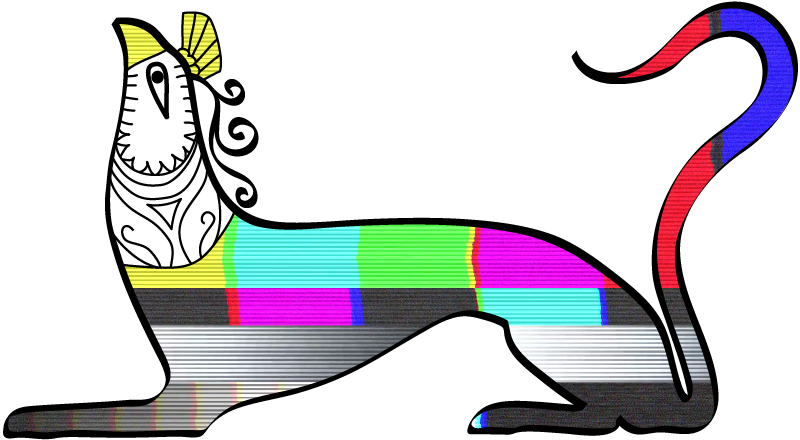ΑΕΘΣΕ 7
On 3-5 June 2022 the 7ο Αρχαιολογικό ΄Εργο Θεσσαλίας και Στερεάς Ελλάδας 2018-2021: από τους προϊστορικούς στους νεότερους χρόνους. 7th Archaeological Meeting of Thessaly and Central Greece 2018-2021: From Prehistory to the Later Periods (ΑΕΘΣΕ 7) will be held in Volos. Further information and participation forms are available at http://extras.ha.uth.gr/aethse7/gr/index.shtml. Papers and posters of interest to Nestor readers will include:
A. Reingruber, G. Toufexis, and G. Tsokas, “Archaeological and geophysical investigations in Elateia 1, a flat extended site of the early MN (6000–5800 calBC)”
E. Alram-Stern and Γ. Τουφεξής, “Η Πλατιά Μαγούλα Ζάρκου και πολιτισμική αλλαγή κατά την 6η χιλιετία π.Χ.”
Σ. Σουβατζή, “Φυσικό και κοινωνικό τοπίο στη Νεολιθική Πλατιά Μαγούλα Ζάρκου”
Ν. Αλεξίου, “Νεολιθικά ειδώλια από τον προϊστορικό οικισμό της Νεράιδας στην Λάρισα (οικόπεδο Παπαγεωργίου)”
Α. Κραχτοπούλου, Ά. Παπαγιάννης, H. Orengo, and Κ. Παλαιοχωρίτης, “Τα μυστικά του Κάμπου. Όλα είναι δρόμος”
Α. Κραχτοπούλου, C. Frederick, H. Orengo, Κ. Παλαιοχωρίτης, S. Riera-Mora, N. Cañellas-Boltà, Α. Δημουλά, Ν. Σαριδάκη, Σ. Κυριλλίδου, Α. Λιβάρδα, P. Halstead, Ρ. Βεροπουλίδου, and A. Garcia-Molsosa, “Τα μυστικά του Κάμπου. Η Πλατειά Μαγούλα στον Πρόδρομο”
Λ. Π. Χατζηαγγελάκης and Κ. Βουζαξάκης, “Ο προϊστορικός οικισμός στον Συκεώνα Καρδίτσας. Ανασκόπηση και ανασύνθεση δεδομένων”
Γ. Στεργίου, “Οι λιθοτεχνίες της Μέσης Εποχής του Χαλκού από το Παλαιόκαστρο Πετρωτού και το Αγριοκέρασο Καρυάς του Νομού Καρδίτσας: Η μελέτη των πρώτων υλών και η ανασύσταση των εγχειρηματικών αλυσίδων”
Μ. Βαϊοπούλου and T. Krapf, “Ανατολικός Τομέας του οικισμού ‘Ασβεσταριά’ Πετρωτού. Παρουσίαση των αρχιτεκτονικών λειψάνων και της κεραμικής της Μέσης Εποχής Χαλκού”
Α. Μπαρτσώκα, “Λιθοτεχνίες της Εποχής του Χαλκού στη Δυτική Θεσσαλία. Η λιθοτεχνία του οικισμού στη θέση «Ασβεσταριά» Πετρωτού Τρικάλων”
Χ. Ν. Κλείτσας, “Παραγωγή και κατανάλωση χάλκινων αντικειμένων στον οικισμό της Ύστερης Εποχής Χαλκού στη θέση ‘Ασβεσταριά’ Πετρωτού Τρικάλων της Θεσσαλίας”
Μ. Βαϊοπούλου and Έ. Ελευθερίου, “Εργαστήριο κεραμικής της ΥΕΧ στην θέση Τζάνη Μαγούλα 2. (Δυτική Θεσσαλία)”
Ε. Σκαφιδά, Ά. Καρναβά, Δ. Αγνουσιώτης, Ι. Γεωργίου, Ε. Μαργαρίτη, Γ. Φακορέλλης, Ε. Α. Τζουμερκιώτη, T. Rehren, and Μ. Βαξεβανόπουλος, “Ο οικισμός της Ύστερης Εποχής Χαλκού στο Κάστρο-Παλαιά του Βόλου: αποτελέσματα 2018-2021 του ερευνητικού διεπιστημονικού προγράμματος “
Ά. Καρναβά and Ε. Σκαφιδά, “Μυκηναϊκά ειδώλια από το Κάστρο-Παλαιά Βόλου: τα πρώτα στοιχεία”
B. Lis and A. Batziou, “Late Bronze Age pottery sequence at Kastro Palaia, Volos. Preliminary thoughts on the deposits from the Diakoumis plot”
Α. Μπάτζιου, Ι. Τουρναβίτου, B. Lis, and Δ. Αγνουσιώτης, “Ο μυκηναϊκός οικισμός στα Πευκάκια (2018-2021)”
Δ. Ρουσιώτη, “‘Πτελεόν λεχεποίην’: το Μυκηναϊκό νεκροταφείο θολωτών τάφων στη Γρίτσα Πτελεού”
Ν. Κυπαρίσση-Αποστολίκα, Γ. Χαμηλάκης, Β. Τσάμης, Τ. Loughlin, N. Zorzin, “Κουτρουλού Μαγούλα: μία ανθούσα εγκατάσταση της Μέσης Νεολιθικής σ’ ένα κομβικό τρίστρατο”
Σ. Κατσαρού, Μ. Γεωργιάδης, Ν. Κυπαρίσση-Αποστολίκα, Γ. Χαμηλάκης, and Ά. Πολιτόπουλος, “Η κεραμική από την τάφρο της Μέσης Νεολιθικής στον οικισμό της Κουτρουλού Μαγούλας Φθιώτιδας”
A. Van de Moortel, “Memory and Ritual at Prepalatial Built Chamber Tomb 73 at Mitrou, East Lokris: Results of Recent Stratigraphic Studies”
Έ. Κουντούρη, Κ. Θεοδωρίδης, and Σ. Σπυροπούλου, “Ξυπνώντας τους Μινύες: Το Αρχαιολογικό Πρόγραμμα Γεωφυσικής Επιφανειακής και Ανασκαφικής Έρευνας στη μυκηναϊκή ακρόπολη του Γλα Βοιωτίας (2018-2021)”
Ν. Καρατζάς and Α. Τσίρης, “Χαρτογραφώντας τις προϊστορικές θέσεις του Δήμου Διρφύων Μεσσαπίων: εγκαταστάσεις σε σπήλαια της περιοχής και η σχέση-εξάρτησή τους με το εγγύς περιβάλλον”
Θ. Ντάλλας, “Μπορεί η αστρονομία να ερμηνεύσει τις ταφές στο σπήλαιο της Αγίας Τριάδας;”
Μ. Βασιλείου, “Πρωτοελλαδικός οικισμός στη θέση ‘Τρία Αλώνια’ Καλλιθέας, Δ. Δωρίδας”
R. Rönnlund, M. Vaiopoulou, F. Tsiouka, D. Pitman, R. Potter, and S. Dandou, “The Palamas Archaeological Project: The continuation of Greek-Swedish archaeological collaboration in the municipality of Palamas, region of Karditsa”
Γ. Τουφεξής, “Η προϊστορία του Α' Αρχαίου Θεάτρου Λάρισας”
Σ. Κασκαντίρη and Δ. Ρουσιώτη, “Σχέσεις και επιδράσεις ανάμεσα στην Αχαΐα και στη Θεσσαλία κατά τη διάρκεια των Ύστερων Μυκηναϊκών χρόνων - Νεώτερα στοιχεία”
Ε. Φρούσσου, “Η Ύστερη εποχή Χαλκού στο Νέο Μοναστήρι Φθιώτιδας: τα έως σήμερα δεδομένα”
Ε. Φρούσσου, “Με αφορμή ένα σπάνιο μικρογραφικό χάλκινο αγγείο: παρατηρήσεις για το ιερό της Δήμητρος Προερνίας στο Νέο Μοναστήρι Φθιώτιδος”
Κ. Θεοδωρακοπούλου, Μ. Βαϊοπούλου, Κ. Σταμούλης, and Κ. Αθανασάς, “Οι Μυκηναίοι στην Δυτική Θεσσαλία: Προκαταρκτική χρονολόγηση προϊστορικής κεραμικής από τον οικισμό της Εποχής Χαλκού στη θέση «Ασβεσταριά» Πετρωτού Τρικάλων, με τη μέθοδο της θερμοφωταύγειας”

